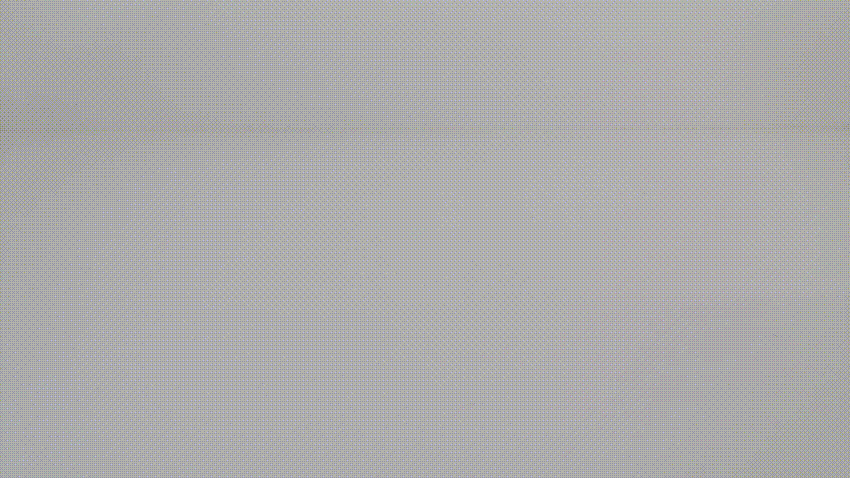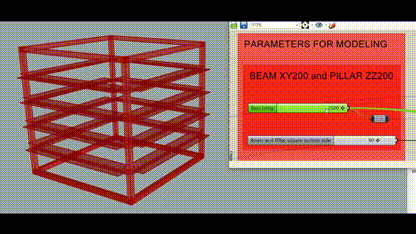FURNISH Project

Urban Responses for a New Inclusive Space
The European Institute of Innovation & Technology (EIT) - Urban Mobility made a call to address the pandemic urban mobility challenges to design and reorganize public spaces. FURNISH is a European initiative that promotes the redesign of public spaces to guarantee social distancing.
The pandemic measures that covid forced to take, put on the table the option of rethinking the urban space, incorporating outside activities that were previously indoor.
In this context, seven teams participated in developing mobility projects and designed temporary mobile urban elements to reconfigure public spaces.
The UPC formed an interdisciplinary team in which LabMaq participated. As a result, the Edus Point project "Institut Barri Besòs" was presented. It consists of an urban system to experience the relationships and synergies of educational spaces. This itinerant structure allows citizen participation through activities that promote proximity, empowerment, and knowledge. The need to build the object on a real scale and test it in the city as part of the pilot run required the participation of LabMaq. One of the contest objectives was that the designs must be reproducible over the world's FabLabs.
As a starting point, was raised the idea of developing a cube-shaped wood structure as an urban element. The proposal premise is that can be built the cube without metal accessories and assembled tool-less. It brings values of sustainability, practicality, and simplicity to the project. Was developed a system with the same solution for all the nodes to achieve this. So, is solved the main structure with only two types of bars.
Thanks the object is modular can be arranged in infinite forms in combination with others. The project's final solution fits all the contest requirements thanks to all these features and even manages to go further by providing added value.
Knot design
To build the cub without metal accessories and tool-free assembles, was required a solution where the fixing contributions of the concurrent bars should provide the necessary rigidity for all the axes.
For this, was designed a solution based on the Japanese technique of wood joining for all the knots. After various tests, was reached the final solution. The X and Y axes complement each other to make way for the Z-axis and complete the node geometry (last photo).
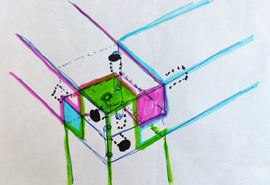


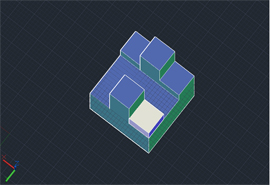
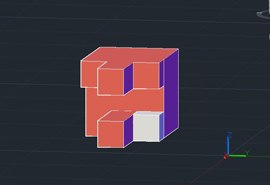

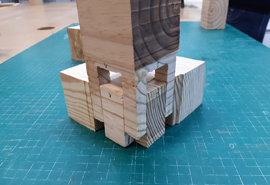

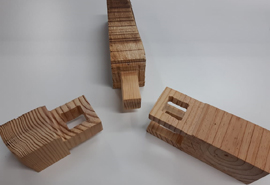
Graphic documentation

Front view
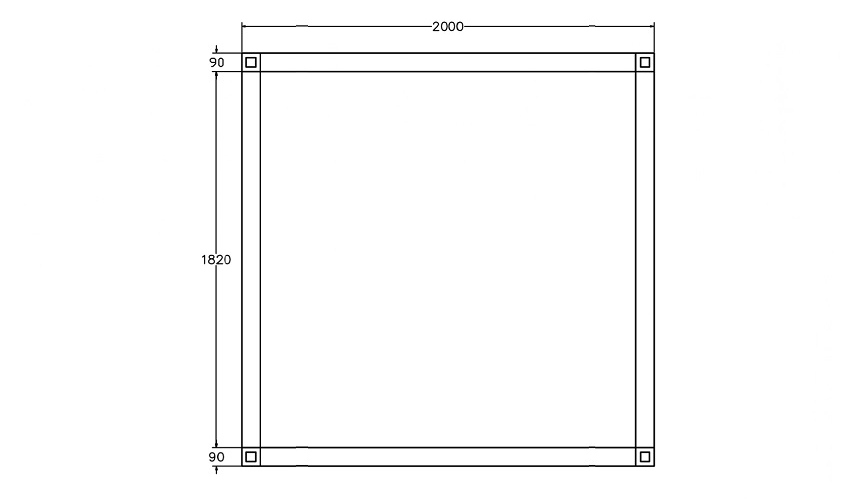
Top view
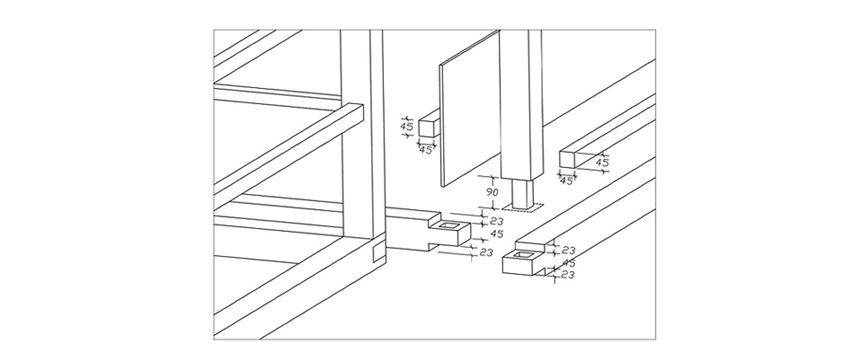
Axonometric
Combinations on the facades of the cube
Can be generated several facades from the two available elements: bar (B) and panel (PH or PV). Arrange these the desired number of times to divide the façade. Each facade can be different depending on the use that is required.
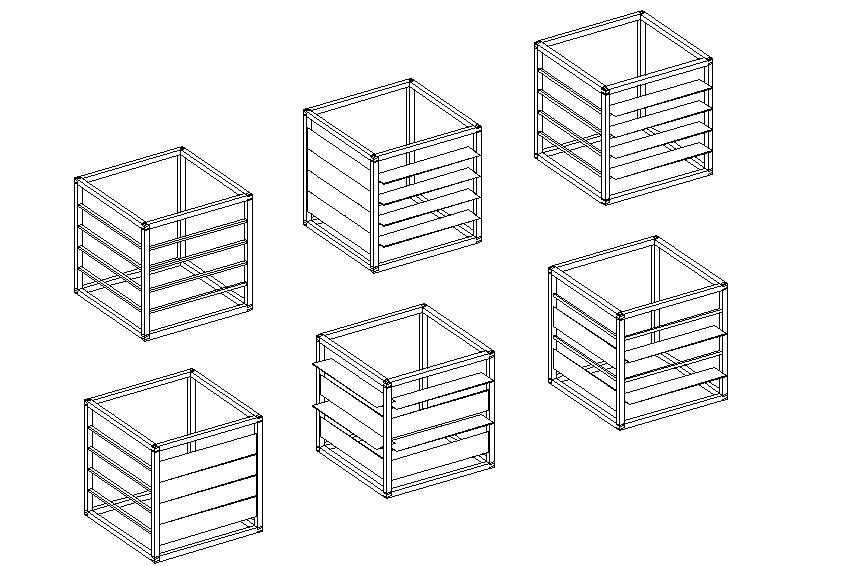
Combinations of several cubes
Can be combined the cubes to create interstitial spaces or different areas related to each other.
The objective of this project is that the object will be useful and adaptable to the maximum possible uses, for example:
- Drinks kiosk
- Magazine kiosk
- Information point
- Meeting point
- Health point (tests, vaccinations, general medical advice, etc.)
- Refreshment point
- Urban garden
- Exhibitor
- Pulpit
- Temporary shelter
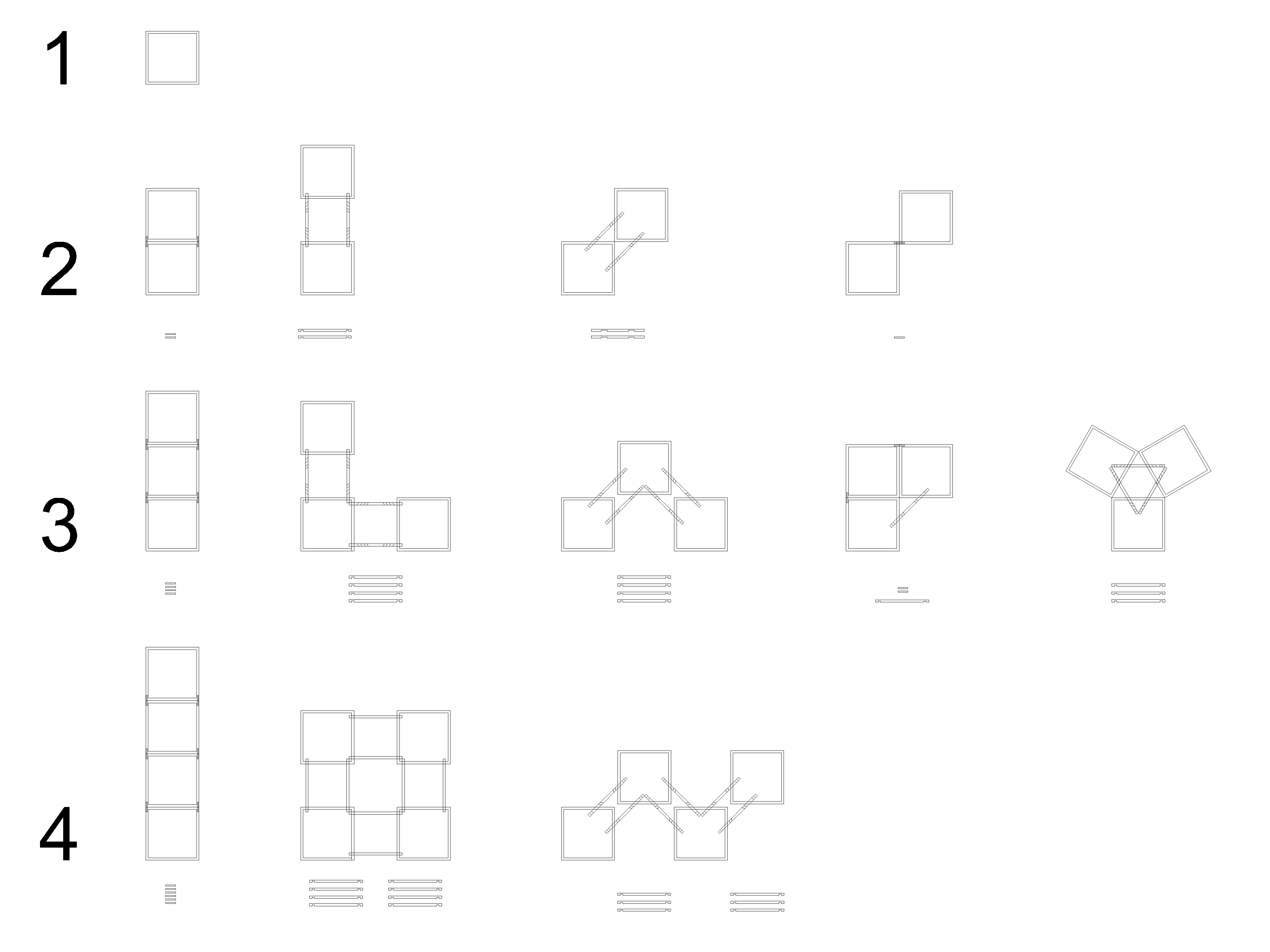
Grasshopper bars parameterization
One of the project requirements is to facilitate a three-dimensional model of the bars to manufacture them in any FabLab. For this, have been prepared this parameterization of the 3D model with Grasshopper. Different values can be modified, depending on the needs, and the available material in each country where the cube is manufactured.
The first element to parameterize is the length's bars that make up the cube, the vertical and the horizontal bars will be adjusted. The model provides a variation range between 1.5 and 2.5 meters.
The second parameter of these bars that can be modified is the thickness, to be able to adjust it to the market availability in each territory. The variation range is between 3 and 5 centimetres.
Another modification is the bar's number on each facade. This parameter automatically modifies the number of holes in the vertical elements. In a variation range between 1 and 9 will be organized the bars on each façade. Is necessary to know, if you install more than five panels in each facade, those panels will be small.
The last modifiable value is the thickness of these facade bars. This modification also affects the thickness of the inserts in the vertical elements.
The application allows you to view the entire cube with the chosen parameters and, on the other hand, generate 3D files for each of the bars to export them in STL for their manufacture.
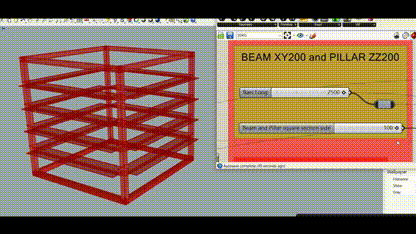
Variation of the thickness of the main bars

Variation of the thickness of the main bars (detail)
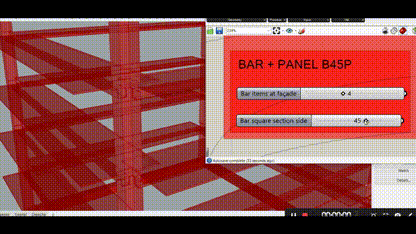
Variation of the thickness of the secondary bars
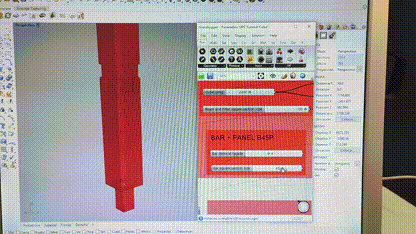
Variation of the thickness of the secondary bars (joint detail)
Variation of total cube length

Variation of the number of elements on the facade
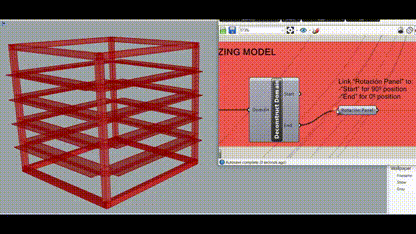
Variation of the panel position
Manufacturing instructions
The technique to manufacture each piece that make up this cube is CNC milling (computer numerical control). Is solved the system with the same joint for all nodes, therefore with only two types of bars, the entire main structure is formed. There are three types of termination of the bars. We are going to describe how to obtain each of the endings.
Previous note: the steps described below are due to the height limitation of the router used. Possibly other higher capacity machines can do the job in fewer steps.
Description of the joint: the horizontal bars form 90º joints in the horizontal plane. The bar connects into the other with a 1/3 - 2/3 proportion as a mouth. The Z-axis incorporation gives rigidity to the knot by inserting one end of the Z bar in the central part of the XY joint.
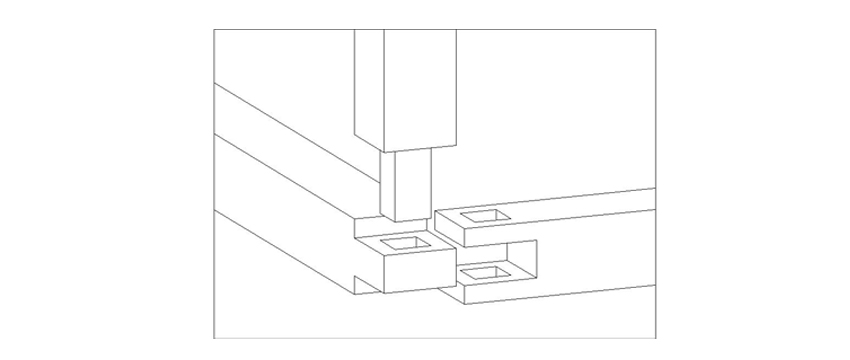
Delivery detail
Termination X:
For the X termination manufacturing from the original bar, follow the next steps:
- Pocket mill 25% of the thickness from the top.
- Pocket mill 25% of the thickness of the bottom. (In our case, steps 1 and 2 are done in two phases because the machine cannot reach the full depth required).
- Open the central hole of 50%. (Turn the bar 90º respect to the position of steps 1 and 2)
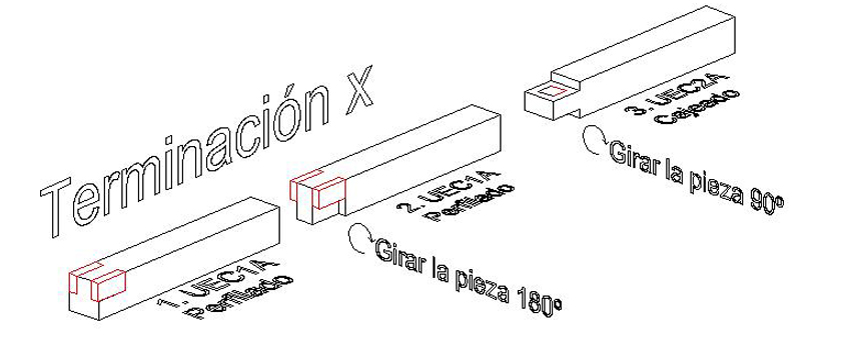
Termination Y:
For the Y termination manufacturing from the original bar, follow the next steps:
- 1 and 2. Pocket mill 50% of the thickness of the central part. (In our case, step 1 is done in two phases because the machine cannot reach the full depth required).
- 3 and 4. Open the central hole of 50%. (Turn the bar 90º respect to the position of steps 1)
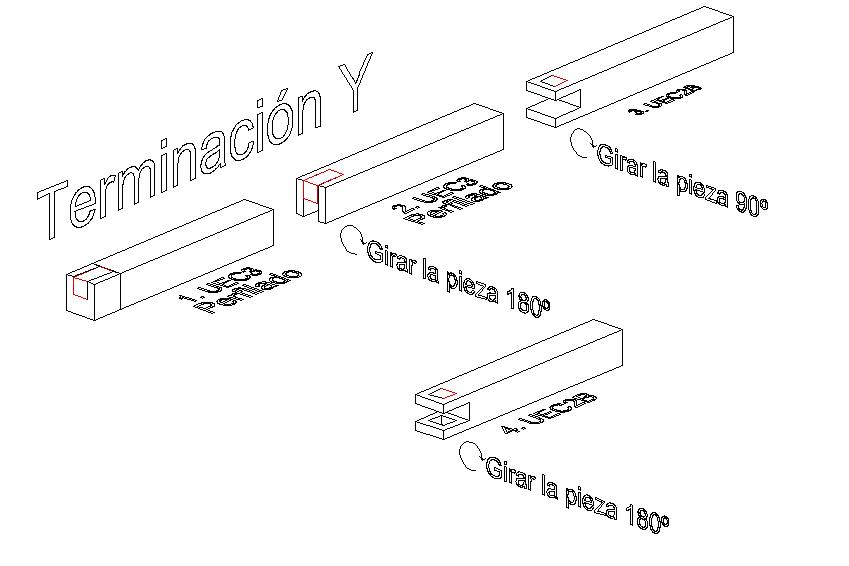
Termination Z:
For the Z termination manufacturing from the original bar, follow the next steps:
- Pocket mill 25% of the thickness from the top.
- Pocket mill 25% of the thickness of the bottom.
- Pocket mill 25% of the thickness from the top. (Turn the bar 90º respect to the position of steps 1 and 2)
- Repeat the previous step.
(In our case, steps 1, 2, 3 and 4 are done in two phases because the machine cannot reach the full depth required).
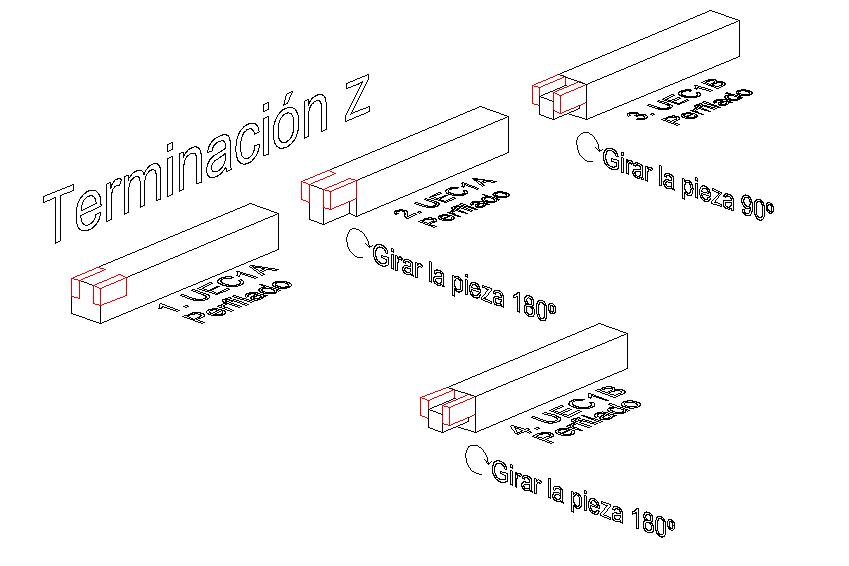
XY bars have an X-type termination at one end and a Y-type termination at the other end. ZZ bars have the two same Z-type endings. Each manufacturer will choose the most suitable tool depending on its availability that is why the manufacturing can be with different tool diameters. (In our case, the manufacturing time of a standard bar, with its two ends, was approximately one hour)

The inside corners milling of any piece will always be round-shape due to the tool's circular shape. In this way, it would be impossible to insert some parts into others.
Consider an extra displacement for the inner corners with the cutter path to assure an optimal fit. That allows the entry of the right angles of the complementary parts. Therefore, it's necessary to modify the perimeter of the piece with an arc in corners. The channels appearing on it are due to that.

KIT
The set of bars can be stacked very compactly due to the standardized measurements of all its parts.
- The first line of 4 XY bars will measure 400x100 mm.
- The second line of 4 XY bars will measure 400x100 mm.
- The third line of 4 ZZ pillars will measure 400x100 mm.
- The fourth line of 8 bars B45 will measure 400x50 mm.
- All of them have a length between 1820 mm and 2000 mm.
In this way, it's formed a compact kit that optimizes the transport volume.
Assembly instructions
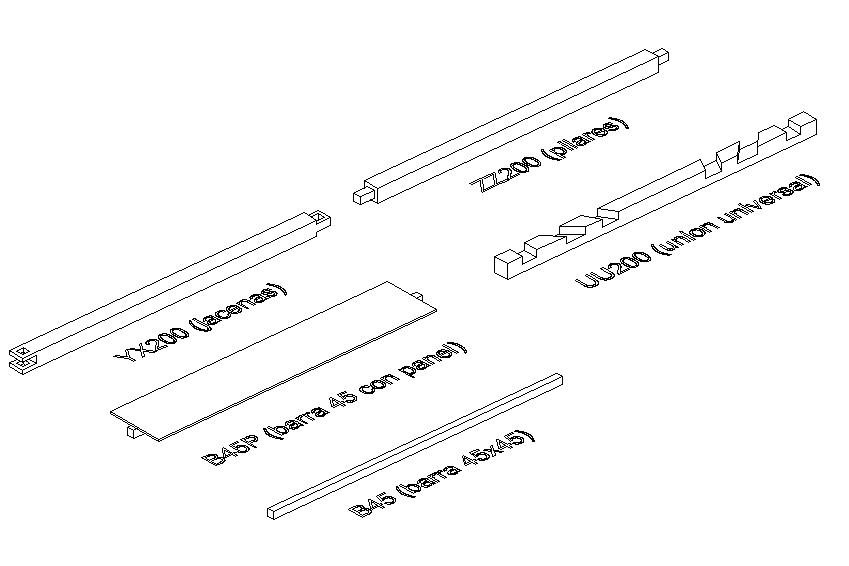
Once has been unpacked the kit to assembly the cube, you must start by placing four XY bars on the floor or mounting platform. Four corners will be joined to configure the base square. The next step is insert the four ZZ vertical bars into the corner holes. To assemble the upper structure it must be provisionally arranged over the top of the vertical bars. Must fitting the XY bars between them before inserting into the ZZ vertical bars.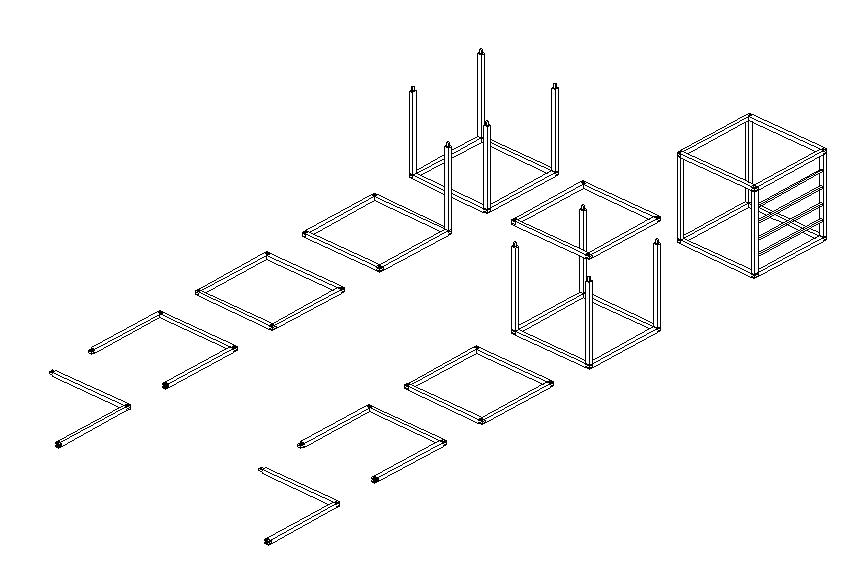
Has been proved that a single person over 1.75m can assembly all the cube.
Practical case: Installation at Institut Barri Besòs
Was selected for the implementation, the Barri Besòs Secondary Institute, for its participatory operation, because is a public education centre open to the neighbourhood, and it's rooted in the social environment location.
The implementation of this project fits with its educational offer that links to technological and scientific processes. Its approach on it, improving the lives of the neighbourhood and the perspectives of its students.
Were given classes outside, projections and data collection with sensors for which it was necessary to install different devices and a wi-fi spot. The cube was the support of all of them.


Results FURNISH - Fast Urban Responses for New Inclusive Spaces & Habitat
 This work is licensed under a Creative Commons Atribución 4.0 International License.
This work is licensed under a Creative Commons Atribución 4.0 International License.


